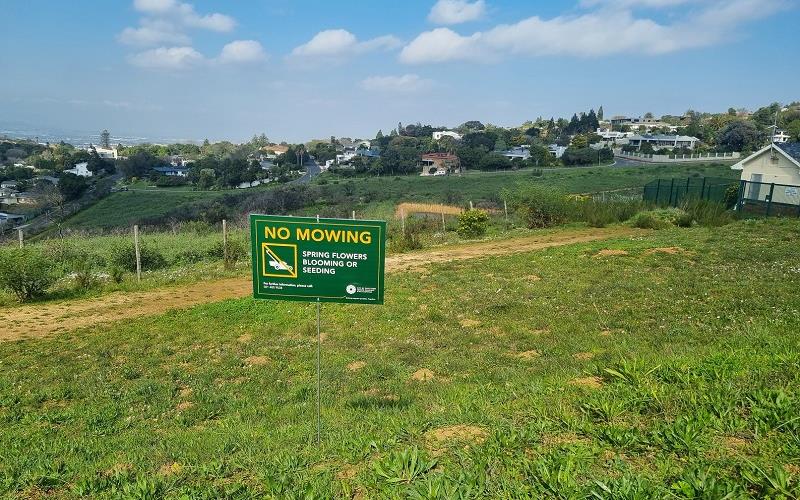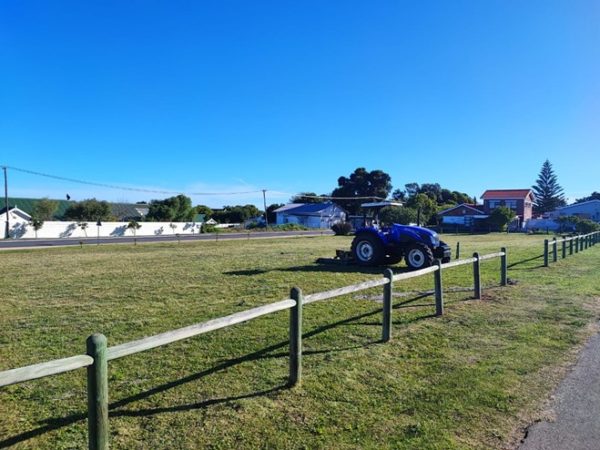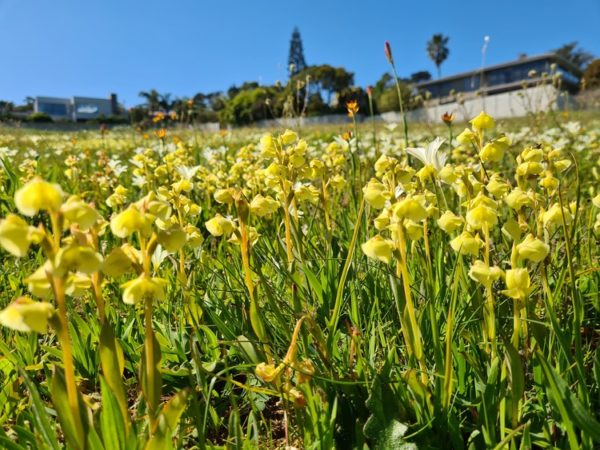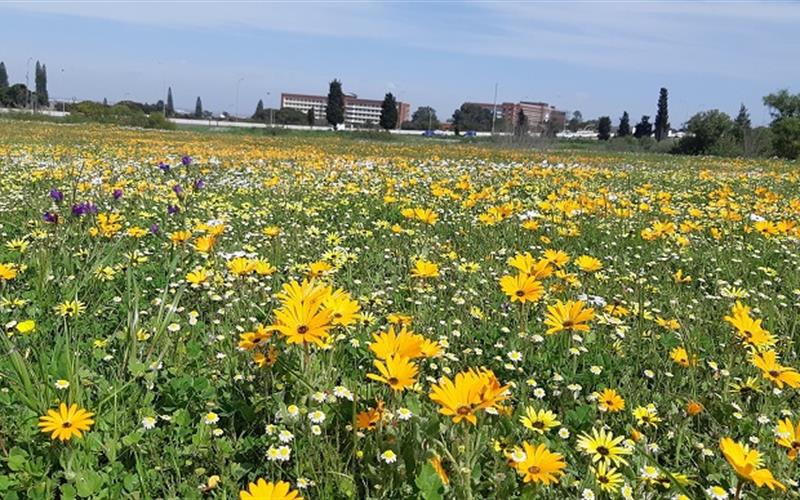With the coming of spring, displays of flowers in parks in Cape Town can easily rival the famous daisies of Namaqualand. This is because the City of Cape Town stops mowing in spring, and mowing will start even later this year.
Also read: Blooming beautiful – Namaqualand daisies flowering season
The announcement by the City of Cape Town that the wildflowers in some of the city’s parks won’t be mowed until the end of November might have escaped most people’s attention. Yet it is a critically important move if the city is to preserve its famed biodiversity.
Cape Town is one of the world’s top cities for biodiversity, and it’s not just because of the Table Mountain National Park. According to studies, there are 19 different vegetation types across the city, most of which are not protected by Table Mountain National Park. This means that critical biodiversity is dotted in small patches across the city.
Research on how this biodiversity can be better managed to improve both human access and animal movements (and gene flow) has shown the importance of letting the wildflowers grow until the end of the seed-producing period, rather than mowing them down as soon as the flowering peak has ended.
For the third year running, the City has decided not to mow selectively in spring. And in a recent press release, the municipality announced that this year mowing will be suspended in selected parks until the end of November.

This is excellent news as spring mowing must be stopped for two and a half months if urban flowers are to finish producing seeds. After two years of monitoring the spring reproductive season for more than 20 species of indigenous bulbs and daisies that grow wild in the city’s parks and road verges, it was found that the City’s previous two-month suspensions had not been long enough to allow the plants to reach maturity.
After the flowers have finished, the wildflower seeds take an additional month to reach maturity. When cut in September, the flowers don’t bloom at all. And if they are cut too soon in October, we lose the following year’s seed bank, along with the food it provides for fledglings and other small animals.
However, the flush of flowers does present problems, which will need to be managed in the years to come. The most worrisome concern is the potential spread of invasive weeds, especially Echium spp (known as Patterson’s curse because it is poisonous to livestock). The peak Echium flowering season is in the second half of November. There are two species of Echium that are noxious and invasive in our region. My observations of the Echium cycles suggest that they go straight to seed almost as soon as the flowers appear. This means that mowing spreads the seeds, so waiting until the very end of November to mow will help the Echium to spread.
Fortunately, researchers in Australia are investigating potential biological solutions to the Echium invasion.

To prevent the invasive grasses from becoming too dense during spring, it would theoretically be best to mow in July. Unfortunately, mowing is not done routinely in July because the municipal budget comes to an end at this time and nothing happens while we wait for approval of new budgets, which usually happens at the beginning of August. The contractors also prefer not to mow during the winter storms.
According to GroundUp, the City of Cape Town and the Overberg Municipality have both acknowledged that the suspension of mowing means we will have to tolerate long grasses and grass seeds during late spring.
Ultimately, the City needs to supplement the mowing suspension by employing contractors to undertake weeding during spring.
The Namaqualand daisies that people flock to see every spring on the West Coast are the result of disturbance in the renosterveld and strandveld ecosystems. Fallow fields returned to the wild quickly become home to pioneering daisies. Fields that were grazed, rather than ploughed and planted with crops, resprout flowers from bulbs lying dormant in the soil.
Closer to the city, the length of the M5 from Rondebosch East to Ottery is currently awash with the yellow blooms of Senecio and Cotula indigenous daisies.
The area between Vasco and Joostenburg is also a renosterveld ecosystem. Groups such as the Botanical Society and the Weltevreden improvement district are negotiating no-mow areas in their local parks and are implementing projects for wildflower corridors throughout their neighbourhoods.

All over Cape Town, the parks benefiting from the mowing suspension are in flower. The City has asked residents to identify parks and open green spaces with a rich fynbos floral spring to be spared the chop during the spring flowering season.
In the long-term, a mix of solutions could be implemented, but for now, strategically adjusting the mowing schedule is the most accessible tool we have for urban park management and these early steps should be celebrated.
Also read:
Picture: City of Cape Town






